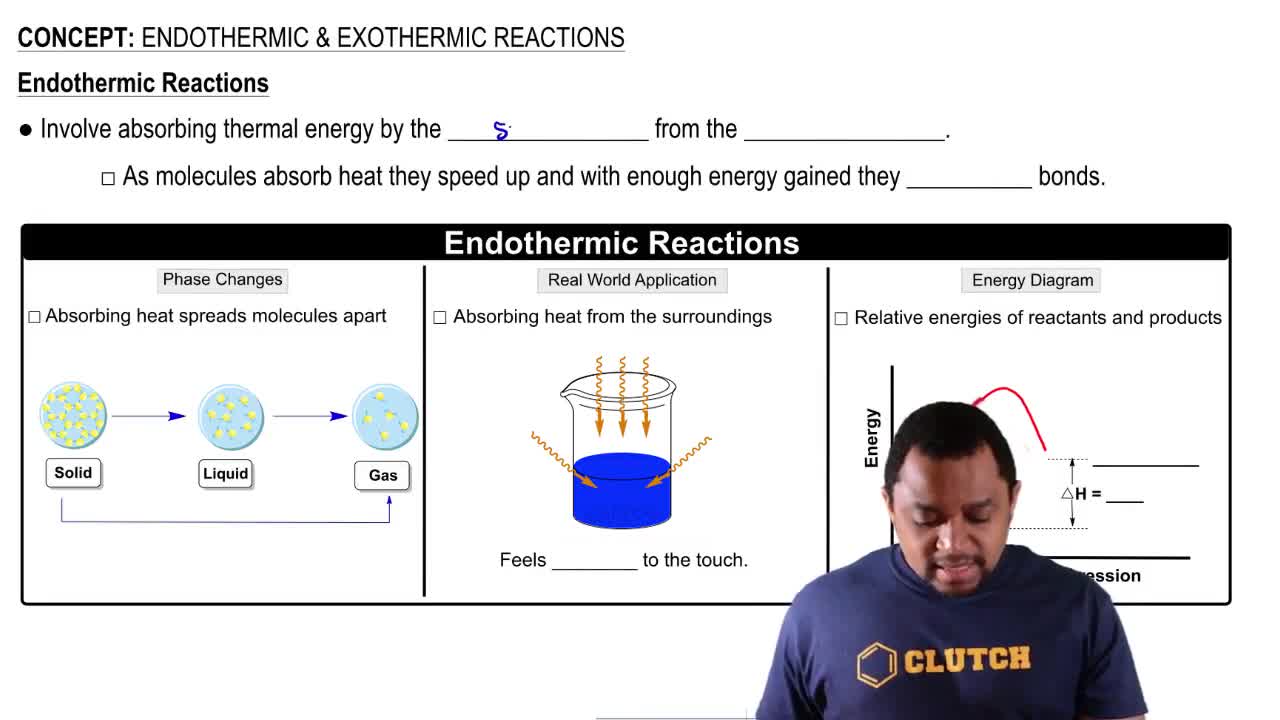Textbook Question
The relative rates of the reaction A + B S AB in vessels
(1)–(3) are 4:4:1. Red spheres represent A molecules, and
blue spheres represent B molecules.
(1)-(3)
(a) What is the order of the reaction in A and B?
510
views
 Verified step by step guidance
Verified step by step guidance



Consider a reaction that occurs by the following mechanism:
A + BC → AC + B
AC + D → A + CD
The potential energy profile for this reaction is as follows:
(b) Write structural formulas for all species present at reaction stages 1–5. Identify each species as a reactant, product, catalyst, intermediate, or transition state.
Consider a reaction that occurs by the following mechanism:
A + BC → AC + B
AC + D → A + CD
The potential energy profile for this reaction is as follows:
(c) Which of the two steps in the mechanism is the rate-determining step? Write the rate law for the overall reaction.
From the plot of concentration–time data in Figure 14.1, estimate: (a) the instantaneous rate of decomposition of N2O5 at t = 200 s.